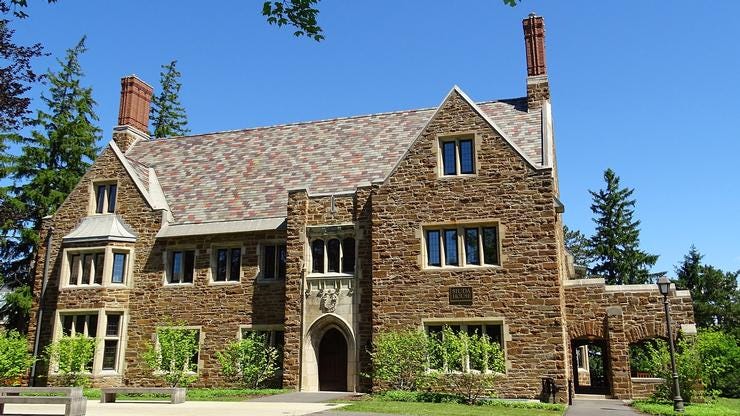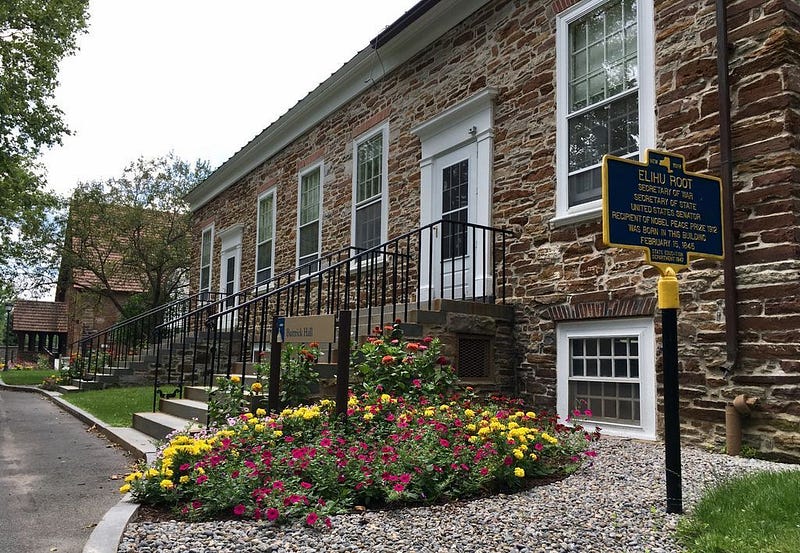
In an op-ed penned by President David Wippman of Hamilton College and Glenn C. Altschuler, professor of American studies at Cornell University, the two wrote that “If the court declares affirmative action unconstitutional, the percentage of students from underrepresented groups at selective colleges and universities will almost certainly plummet, as it has in the nine states that have banned the practice.”
In early summer of 2023, the Supreme Court is expected to rule on the legality of Affirmative Action in admissions at America’s colleges and universities. Experts believe that the ruling will declare the use of race in considering a student’s admission unconstitutional, a 180° turn for how college admissions departments are allowed to consider racial diversity.
The Spectator
spoke with representatives from the Hamilton Admissions Department, administrators and students to learn more about how the changing legal interpretation will affect Hamilton’s admissions policies, racial demographics and student life.
Beyond Wippman’s personal support, Hamilton as an institution has firmly voiced its support for Affirmative Action, joining 32 peer institutions in filing a brief to the Supreme Court supporting Harvard University and the University of North Carolina, the defendants in the Affirmative Action case. The brief emphasized the shared commitment to racial diversity as an educational benefit, claiming that “Each college deliberately seeks to enroll and house on campus a highly diverse group of students — from different states and countries; from urban and rural backgrounds; homeschooled, private-schooled, and public-schooled; with differing economic circumstances; with different kinds of experiences, talent, or athletic ability; students who will be the first in their families to go to college and, among some of [schools who filed the brief], students with family connections to the schools.” The brief went on to describe the educational benefits of racial diversity, saying, “Studies consistently show that diversity — including racial diversity — meaningfully improves learning experiences, complex thinking and non-cognitive abilities.”
Wippman expanded on the importance of racial diversity: “There are educational benefits to having a diverse community. If diversity declines to some extent, then I think we’d lose some of the educational benefit. And that would be unfortunate for our students, for the institution and for society.”
Dean of Admissions John McLaughlin said that the ruling, “Doesn’t change our belief that bringing together people from different backgrounds, including people from different racial and ethnic backgrounds, is to the benefit of everyone in our community, and that we all learn as a result from interacting with different people. It does change the way in which we can approach the work and what we can consider in the course of the review process.” While McLaughlin was strongly committed to supporting racial diversity, he expressed uncertainty as to the degree this would be possible. “I think [an Affirmative Action ban] makes our work harder, but it doesn’t change what we want to do, it changes how we can do it. This would represent one of the biggest challenges that I think I’ve encountered.”
McLaughlin’s uncertainty was largely based on the lack of clarity all observers share regarding what the Court will actually decide; while observers agree that the court will likely rule against Affirmative Action, it is less clear what exactly this ruling will make illegal. While colleges and universities will most likely lose the right to consider an applicant’s race, they may have alternatives that can help them create racially diverse classes. That possibility hinges on whether institutions will be able to consider “racial proxies,” indicators from other aspects of an applicant’s life that correlate to their racial identity, such as zip code, demographics of their high school or socioeconomic status. These factors are legally race-neutral, because they do not consider the race of an individual applicant, but admissions can still look to recruit from racially diverse communities. While these “race-neutral” considerations are potential alternatives admissions offices can use in order to accept racially diverse classes, the conservative-minded Court may rule that if colleges and universities are pursuing these policies solely with the goal of building racial diversity, they are not legal.
In the past decades, nine states have passed legislation banning the consideration of race in college admissions: California, Washington, Florida, Michigan, Nebraska, Arizona, New Hampshire, Oklahoma and Idaho. In all of these states, rates of students attending school from underrepresented racial minorities dropped radically, despite the efforts of administrators to enroll racially diverse classes. For example, in the University of California system, where a public referendum banned schools from considering race in admissions in 1996, the likelihood of admission for underrepresented racial minorities at the most selective UC schools, Berkeley and UCLA, fell by 30 and 25 percent respectively, compared to pre-ban levels.
McLaughlin explained several strategies the admissions department could use to ensure that racial demographics at Hamilton do not drastically shift away from under represented minorities.“There’s interesting work that’s being done looking at contextual factors, including socio-demographic data, not on an individual level, but aggregated to community level, and trying to draw inferences about students based on where they live, their school communities, their home communities…it’s not going to be as accurate as having perfect individual level information, but there may be opportunities [to support racial diversity by] leaning on socio demographic data.”
When asked about how successful creative admissions strategies can be in maintaining racial diversity in a race-blind admissions system, Wippman expressed uncertainty. “Amherst did a study looking at their own recent past admissions and trying to calculate what would have happened if they had applied an entirely race blind standard, and their conclusion was, it would be a big drop [in racial diversity of admitted students]. Again, it’ll vary by institution. And so much depends on the way the opinion is actually worded. So I don’t want to make a prediction, because I don’t know.”
McLaughlin expressed more confidence in Hamilton’s ability to recruit a racially diverse class, in contrast with Wippman’s comments and historical precedent. “I’m optimistic because I know that a lot of people in this field and in this work remain committed to doing whatever we need to do within the confines of the law to continue to recruit and enroll a diverse class.” McLaughlin added, “It will be a challenge, but in speaking with colleagues across campus, in the admissions office as well, we have a lot of good ideas in terms of how we’ll be able to do this. I’m cautiously optimistic that we will be able to maintain the diversity that we’ve enjoyed on our campus. But it’s going to require a lot of work and a lot of thought.”

Beyond recruitment strategies, McLaughlin mentioned the importance of yield in recruitment, especially regarding promoting racial diversity. Yield refers to the rate of students who are accepted to Hamilton and choose to attend. McLaughlin described this process, saying, “Once students have been admitted, we’re often trying to reach out to them, not only to congratulate them, but also try and show them what their experience might be like on our campus. It’s helpful if we’re able to connect students to communities and resources on our campus that they may be interested in, that they may feel some sort of affinity towards and that they may benefit from being part of on our campus.”
While the admissions department reaches out to all admitted students, McLaughlin described outreach as especially important for students from underrepresented groups, in an attempt to demonstrate that those groups have a place on Hamilton’s campus. With potential changes in the way admissions departments are allowed to consider race, however, the ability to bring admitted students together with potential peers is more difficult. McLaughlin said that, “for students that are coming from underrepresented racial and ethnic backgrounds, connecting them to people on our campus who identify in a similar way, or resources or centers that may be of interest to them [is important]. If we don’t have the benefit of that information, then it may be more challenging to make those connections proactively.”
Wippman explained that Hamilton students from underrepresented communities will have a worse experience should the representation of those groups decrease. “I think one of the benefits of having a diverse community is for members of underrepresented groups to have others from the same underrepresented group on campus, [which] is valuable.” He continued, saying, “Even now, there are always students, for example international students sometimes say to me, ‘there’s no one else from my country here, no one else speaks my language,’ so we’re not unfamiliar with the challenge of someone being from a group that’s not as well represented in the community as others. We’ll have to navigate it as best we can and provide as much support as we can.”
Julio Dembs ’23, Co-President of BLSU, shared his perspective: “The more different you are from a classmate, the more you have to learn from each other. The educational experience available at Hamilton continues to be compromised by a lack of cultural diversity among both students and faculty, and I don’t think that’s going to change based on what the Supreme Court decides regarding the use of race as a factor in admissions. It may make things more challenging, but the College will still have opportunities to promote racial diversity by emphasizing cultural, geographic, and socioeconomic diversity in the body of students it enrolls. I think what’s really going to make a difference is the institution — and that includes us as the student body — making a collective commitment to fostering a more diverse community, not only in rhetoric but also in practice. Frankly, I’m not sure that’s happened in either. I think we need to pause and consider what it is we’re looking for in prospective Hamilton students, which areas we’re visiting for outreach and advertising and whether our practices align with the institution we want to be.”
















